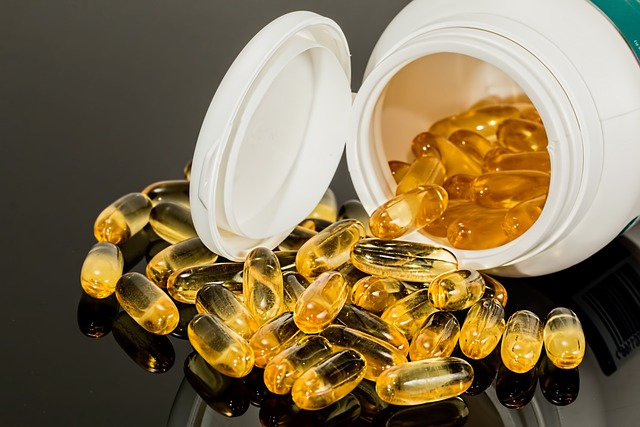-
Table of Contents
- Peptides: Enhancing Muscle Growth and Recovery
- Understanding Peptides
- Types of Peptides
- Mechanisms of Action
- Stimulating Growth Hormone Release
- Promoting Muscle Cell Growth
- Reducing Inflammation and Promoting Healing
- Benefits of Peptides for Muscle Growth and Recovery
- Case Studies and Research
- Study on GHRP-6
- IGF-1 and Muscle Hypertrophy
- TB-500 and Injury Recovery
- Practical Application and Usage
- Dosage and Administration
- Cycle Length
- Combining Peptides
- Potential Side Effects
- Conclusion
Peptides Enhancing Muscle and Recovery
Peptides have gained significant attention in the fitness and bodybuilding communities for their potential to enhance muscle growth and recovery. These short chains of amino acids play a crucial role in various biological processes, including muscle repair and growth. This article explores the science behind peptides, their benefits, and how they can be effectively used to improve muscle performance.
Understanding Peptides
Peptides are composed of two or more amino acids linked by peptide bonds. They are smaller than proteins but share similar functions. In the context of muscle growth and recovery, peptides can influence various physiological processes, such as hormone production, inflammation reduction, and tissue repair.
Types of Peptides
Several types of peptides are commonly used to enhance muscle growth and recovery:
- Growth Hormone Releasing Peptides (GHRPs): These stimulate the release of growth hormone, which plays a key role in muscle growth and repair.
- Insulin-like Growth Factor-1 (IGF-1): This peptide promotes muscle cell growth and differentiation.
- Thymosin Beta-4 (TB-500): Known for its ability to promote healing and reduce inflammation.
- Melanotan II: While primarily used for tanning, it has been shown to have some muscle-building properties.
Mechanisms of Action
Peptides work through various mechanisms to enhance muscle growth and recovery:
Stimulating Growth Hormone Release
GHRPs, such as GHRP-6 and GHRP-2, stimulate the pituitary gland to release growth hormone. Increased levels of growth hormone can lead to improved muscle protein synthesis, enhanced fat metabolism, and faster recovery from workouts.
Promoting Muscle Cell Growth
IGF-1 is a potent anabolic peptide that promotes muscle cell growth and differentiation. It works by activating the IGF-1 receptor, which triggers a cascade of cellular events leading to muscle hypertrophy.
Reducing Inflammation and Promoting Healing
Peptides like TB-500 have anti-inflammatory properties and can accelerate the healing of muscle injuries. By reducing inflammation, these peptides help create an optimal environment for muscle repair and growth.
Benefits of Peptides for Muscle Growth and Recovery
The use of peptides offers several benefits for those looking to enhance muscle growth and recovery:
- Increased Muscle Mass: Peptides like IGF-1 and GHRPs can significantly increase muscle mass by promoting protein synthesis and muscle cell growth.
- Faster Recovery: By reducing inflammation and promoting tissue repair, peptides can shorten recovery times between workouts.
- Improved Fat Metabolism: Growth hormone-releasing peptides can enhance fat metabolism, leading to a leaner physique.
- Enhanced Performance: With faster recovery and increased muscle mass, athletes can experience improved performance in their respective sports.
Case Studies and Research
Several studies have demonstrated the effectiveness of peptides in enhancing muscle growth and recovery:
Study on GHRP-6
A study published in the “Journal of Endocrinology” investigated the effects of GHRP-6 on muscle growth in rats. The results showed a significant increase in muscle mass and strength in the GHRP-6 treated group compared to the control group.
IGF-1 and Muscle Hypertrophy
Research published in the “American Journal of Physiology” examined the role of IGF-1 in muscle hypertrophy. The study found that IGF-1 administration led to increased muscle fiber size and number, indicating its potent anabolic effects.
TB-500 and Injury Recovery
A clinical trial conducted by the “National Institutes of Health” evaluated the effects of TB-500 on muscle injury recovery. Participants who received TB-500 reported faster healing times and reduced inflammation compared to the placebo group.
Practical Application and Usage
For those interested in using peptides to enhance muscle growth and recovery, it is important to understand the proper usage and dosing protocols:
Dosage and Administration
The dosage of peptides can vary depending on the specific peptide and individual goals. It is recommended to start with a lower dose and gradually increase it based on the body’s response. Peptides are typically administered via subcutaneous injection.
Cycle Length
Peptide cycles can range from 4 to 12 weeks, depending on the desired outcomes. It is advisable to take breaks between cycles to prevent desensitization and maintain the effectiveness of the peptides.
Combining Peptides
Combining different peptides can enhance their overall effectiveness. For example, using GHRP-6 in conjunction with IGF-1 can provide synergistic effects, leading to greater muscle growth and recovery.
Potential Side Effects
While peptides offer numerous benefits, they can also have potential side effects:
- Water Retention: Some peptides can cause water retention, leading to temporary weight gain.
- Joint Pain: Increased growth hormone levels can sometimes result in joint pain or discomfort.
- Hypoglycemia: Peptides that stimulate insulin release, such as IGF-1, can cause low blood sugar levels.
- Injection Site Reactions: Redness, swelling, or irritation at the injection site can occur.
Conclusion
Peptides have emerged as a promising tool for enhancing muscle growth and recovery. By stimulating growth hormone release, promoting muscle cell growth, and reducing inflammation, peptides offer a multifaceted approach to improving muscle performance. While they come with potential side effects, proper usage and dosing can help mitigate these risks. As research continues to evolve, peptides may become an integral part of muscle-building and recovery strategies for athletes and fitness enthusiasts alike.
